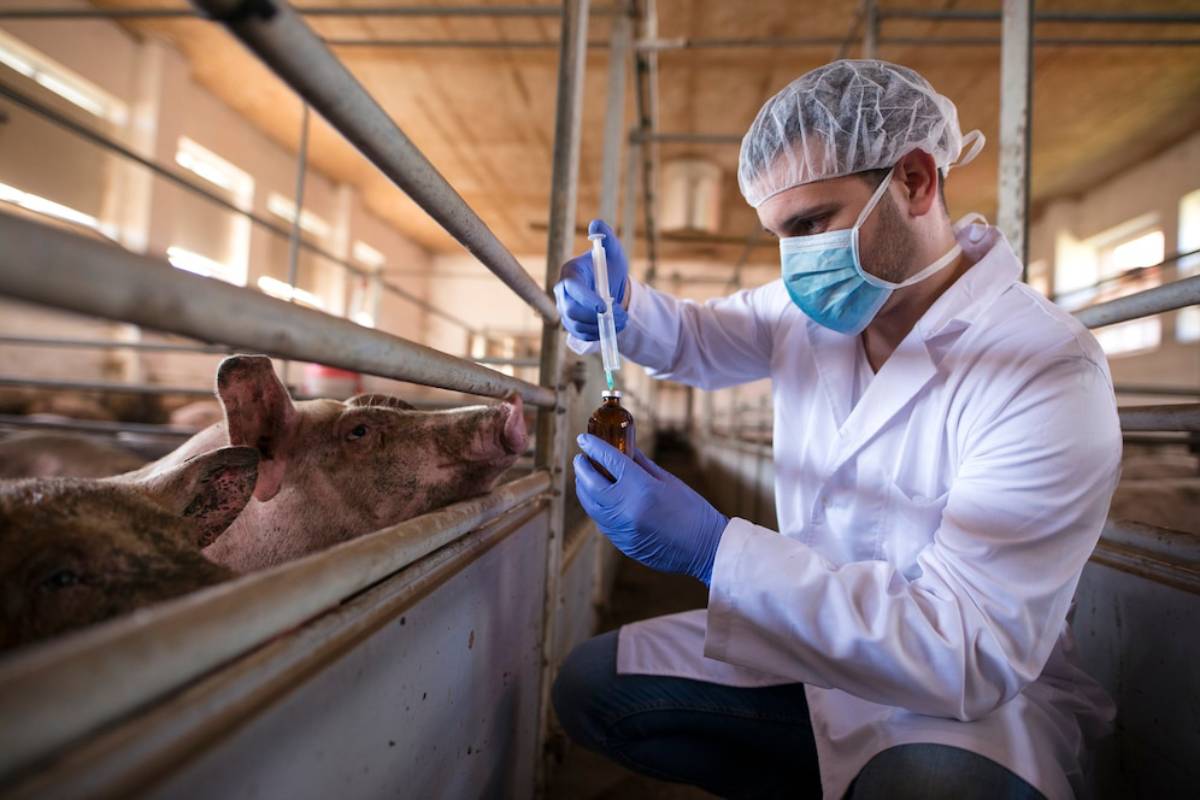
The Future of Universal Flu Vaccines
The quest for a universal flu vaccine has long been a central ambition within immunisation science. Influenza is tough to tackle. Its high mutation rate leads to new strains appearing often. Every year, scientists predict which flu strains will spread. Then, they adjust the seasonal vaccine to match. This prediction-based method isn’t always right. Sometimes, this leads to years when the vaccine works much less effectively.
A universal flu vaccine aims to overcome this fundamental limitation. It aims to offer broad and lasting immunity against many influenza viruses. This includes strains that have not even emerged yet. This breakthrough would have huge benefits. It would protect individuals and improve public health overall. But how close are we to achieving this goal, and what scientific strategies are driving progress?
This article looks at the future of universal flu vaccines. It covers why this research matters, the progress being made, and what life could be like with a universal flu vaccine.
Why the Need for a Universal Flu Vaccine Is Urgent

Seasonal influenza causes significant global health challenges every year. The World Health Organization (WHO) reports that 3 to 5 million people get severe influenza each year. This leads to as many as 650,000 deaths from respiratory issues around the globe. The virus poses a serious threat to vulnerable groups. This includes the elderly, young children, and people with chronic health issues.
Current flu vaccines are effective to a degree. They offer only temporary and strain-specific protection. Their efficacy typically ranges from 40% to 60%, depending on how well the selected strains match those in circulation. Moreover, vaccine production still relies heavily on time-consuming methods like egg-based manufacturing. This limits our ability to rapidly respond to new or unexpected outbreaks.
In contrast, a universal flu vaccine would offer several transformative advantages:
- Longer-lasting immunity that reduces the need for annual vaccinations.
- Broader protection against various influenza subtypes, including pandemic strains.
- Improved global preparedness for future flu outbreaks and pandemics.
The COVID-19 pandemic has underscored the importance of rapid vaccine development and deployment. Treating influenza with the same urgency and creativity could change how we tackle this ongoing viral threat.
Scientific Strategies and Innovations Driving Progress
Achieving a universal flu vaccine is no small feat. It involves overcoming numerous scientific, logistical, and financial challenges. Recent advancements in immunology, molecular biology, and artificial intelligence (AI) are helping us reach this long-awaited goal.
Targeting Conserved Viral Components
A promising strategy is to target stable regions of the influenza virus. These regions stay the same across different strains. A key focus has been the haemagglutinin (HA) protein, particularly its stem or stalk region. Traditional vaccines usually focus on the variable head of the HA protein. This part mutates often. The stalk region stays mostly the same. This makes it a great target for broad-spectrum immunity.
Researchers are looking at other key proteins, like neuraminidase (NA) and matrix protein 2 (M2). These could help create a broad, protective vaccine.
mRNA and Nanoparticle-Based Platforms
The success of mRNA vaccines during the COVID-19 pandemic has sparked interest in using this technology for influenza. mRNA vaccines offer rapid production timelines, high precision, and scalability. Moderna and Pfizer-BioNTech, top names in mRNA tech, are running clinical trials for flu vaccines with this method.
Nanoparticle-based vaccines also offer exciting potential. These synthetic particles can be designed to show viral proteins in neat patterns. This mimics the virus’s structure and boosts the immune response. Nanoparticle vaccines can deliver several antigens at once. This boosts immunity and may protect against many flu subtypes in a single shot.
Prime-Boost Strategies
The “prime-boost” approach is gaining traction as a way to bolster the immune system’s memory and response. This involves giving a priming dose with one type of vaccine (e.g., viral vector or mRNA), followed by a booster with a different platform or formulation. These regimens can create a stronger and more flexible immune response. This is key for making a universal flu vaccine effective.
Artificial Intelligence and Predictive Modelling
AI and machine learning are changing vaccine research. They help researchers quickly model viral mutations and immune responses. This speed and accuracy are unmatched. AI can analyse large datasets. It helps find new antigen targets, improve vaccine design, and predict how future flu strains may change. These insights help scientists create vaccine candidates that are effective now and likely to stay protective in the future.
Key Benefits for Global Health
A universal flu vaccine would greatly impact global health.
- Lower healthcare strain: Fewer flu cases mean less pressure on healthcare systems during flu seasons.
- Lower mortality rates: Vulnerable groups, especially in low- and middle-income countries, would gain from better protection.
- Better pandemic readiness: A vaccine that protects against pandemic strains, such as H1N1 or H5N1, could help prevent global health crises.
- More equity in immunization: A single, effective vaccine can make logistics easier. This is especially true in places with weak infrastructure.
Best Practices and Common Pitfalls to Avoid
While the promise of a universal flu vaccine is exciting, it is important to remain grounded in the realities of vaccine development. Here are some best practices and key points to consider:
Prioritise Interdisciplinary Collaboration
Creating a universal flu vaccine requires teamwork. Virologists, immunologists, epidemiologists, and data scientists must work together. Bringing together knowledge from these areas makes sure vaccine candidates are both biologically safe and ready for use.
Maintain Public Trust
Vaccine hesitancy remains a major challenge. Ensuring public confidence through transparent communication, rigorous testing, and accessible education is critical. Misconceptions, like thinking a universal flu vaccine could completely end the flu, need clear, evidence-based messaging.
Ensure Global Access
Equity must remain a central consideration. Advanced economies should not monopolise access to breakthrough vaccines. A universal flu vaccine will succeed if many people use it. This includes areas where vaccination rates have been low in the past.
Expert Recommendations and Perspectives
Immunologists and global health experts highlight the need to learn from recent COVID-19 vaccine rollouts. The fast progress, adaptable rules, and worldwide collaboration during the pandemic can help shape future vaccine projects. This includes creating universal flu vaccines.
Additionally, experts recommend increasing investment in flu surveillance systems. Tracking flu viruses worldwide in real time helps test universal vaccine candidates. This ensures they work well for different populations and regions.
Addressing Lesser-Known Challenges
Some challenges in creating a universal flu vaccine might not get much attention, but they are very important:
- Immunosenescence: Older adults often exhibit a weakened immune response to vaccines. Universal flu vaccines must be formulated to overcome this limitation.
- Antigenic imprinting: “Original antigenic sin” is when the immune system reacts to new flu strains based on its first exposure. This can hinder the effectiveness of new vaccines.
- Manufacturing scalability: Making a universal vaccine for the whole world needs strong manufacturing, aligned regulations, and good supply chain coordination.
The Road Ahead: Research, Regulation, and Readiness
We are likely several years away from having a fully approved and widely available universal flu vaccine. However, multiple candidates are in early and mid-stage clinical trials. The National Institutes of Health (NIH), the Coalition for Epidemic Preparedness Innovations (CEPI), and the World Health Organization are funding and coordinating these efforts.
A successful rollout will rely on a few key factors. First, we must overcome regulatory hurdles. Then, we need to ensure long-term safety. Finally, we must prove efficacy for different age groups and regions. Governments should back this effort with policies. These policies must encourage innovation and make access affordable.
Conclusion: A Healthier Future Within Reach

The future of universal flu vaccines marks a turning point in immunisation science. These vaccines could target the virus better than ever. This means they might remove the uncertainty and limited protection that come with seasonal flu shots. A universal flu vaccine could greatly lower flu-related sickness, hospital visits, and deaths for many years. This will need global teamwork, ongoing funding, and active community involvement.
The journey is tough, but the goal is important. We aim for a future where influenza doesn’t disrupt lives, strain healthcare systems, or take hundreds of thousands of lives every year.
Now is the time to support research, fund innovation, and advocate for equitable vaccine access. Together, we can help transform the dream of universal flu protection into a reality.
What role do you think a universal flu vaccine will play in the future of global health? Let’s keep talking and highlight an exciting breakthrough in medical science today.


